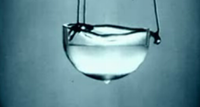
Photo from wikipedia
An accelerated detector will see thermal radiation around with temperature T which is termed as Unruh effect. The two accelerated observers can detect quantum correlations between them through the vacuum… Click to show full abstract
An accelerated detector will see thermal radiation around with temperature T which is termed as Unruh effect. The two accelerated observers can detect quantum correlations between them through the vacuum field. A natural question arises: is this equilibrium quantum correlation equivalent to the one between the two stationary detectors under a thermal bath? A further question is what if the two accelerations or the couplings between the detectors and vacuum field are different and how this nonequilibrium effect can influence the quantum correlations. In this study, we examine the above scenarios. We found that as the acceleration of the detectors increase, the quantum correlations (entanglement, mutual information, discord) will increase first and eventually decay depending on the redshift effect. The temperature and acceleration characterizing the equivalent space-time curvature show different impacts on the global quantum correlations in this equilibrium (equal temperatures or accelerations of the two detectors) scenario. When the equal acceleration is in the opposite direction, as the distance increases, the correlation will decay, and the entanglement appears to be more robust than the quantum mutual information and discord. Importantly, we have uncovered that the nonequilibriumness characterized by the degree of the detailed balance breaking due to the different couplings of the detectors to the vacuum field can increase the quantum correlations. We also uncovered both the nonequilibrium (different accelerations of the two detectors) and distance effects on quantum correlations between the detectors.
Journal Title: Physical Review D
Year Published: 2021
Link to full text (if available)
Share on Social Media: Sign Up to like & get
recommendations!